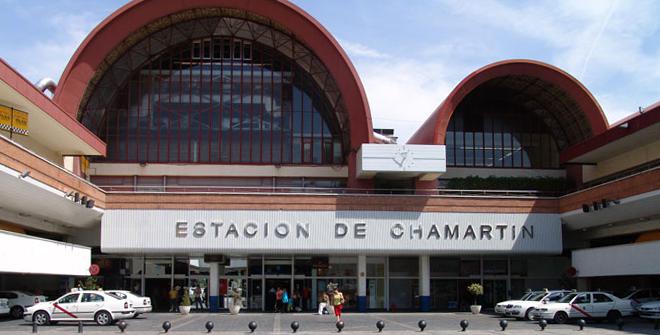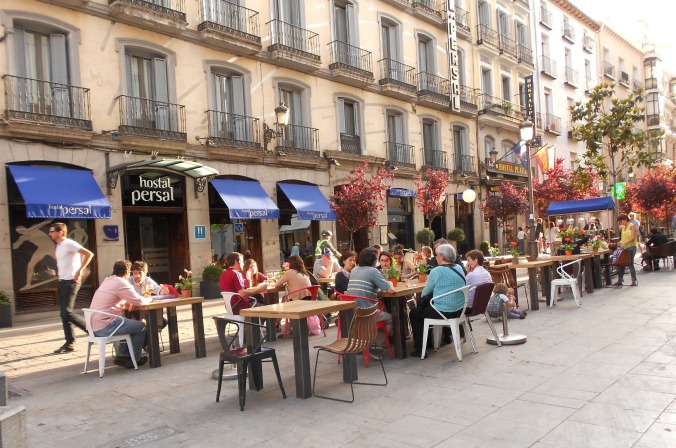Planning on visiting Malaga or Seville? Read on to find out why you shouldn’t leave southern Spain without visiting Ronda.
Southern Spain is speckled with pueblo blancos (white towns). Each has its own character and it’s hard not to get caught up visiting all of them. If you’re short on time, Ronda is the one town to visit.
Why you shouldn’t leave southern Spain without visiting Ronda
We chose Ronda as our base for several days because of its point of difference from the other white villages.
Steeped in history, the city sits on two sides of a deep gorge connected by a fantastic bridge—the bridge, Puento Nuevo (new bridge) was built in 1793.
Our apartment was located in Plaza Espana next to Puento Nuevo, with an added “wow” factor. Our expansive patio looked out over the magnificent Sierra de las Nieves! The Tourist Office around the corner from our apartment armed us with a map and options on how to spend our time in the town.

We were fortunate to arrive on a Saturday when a free flamenco concert was being held in Ronda’s Old Town.
A summer evening in Ronda
The views from both sides of the bridge are dramatic, and it is the first place to stop to soak in the scenery before you explore the old town.
In the Old Town, we followed the sound of music down some cobblestone alleys to appear at an open-air area where the rehearsal was in progress. Moving on, we stopped in a pretty square to visit the cathedral, Santa Maria de la Mayor. An added pleasure was watching a wedding party emerge.

The plaza offers several restaurants if you’d like to eat in the quiet precinct. We opted for the low-key garden restaurant to try a few of the local dishes on offer. The food portions are large and delicious.
Back at the concert venue, we found the seats were filling up fast. Instead of sitting down with the audience, we decided to sit on the ledge above to watch people and observe. By 10:00 pm, the arena was full. Concertgoers came dressed for the occasion and the atmosphere was jovial as the concert commenced.

We left after an hour, wishing we understood the language better so we could have enjoyed the music, singing and dancing as much as the locals did.
The Cathedral was spectacularly lit up as we passed by on the way back to our apartment. At 11:30 pm. townsfolk were still out and about in droves, and the town was buzzing. Just one of the benefits of visiting in the summer months.
Things to do in incredible Ronda
Enjoy the dramatic views from Mirador Aldehuela
Mirador Aldehuela is on the Old Town side of Puento Nuevo and directly opposite Plaza Espana. We recommend that it’s one of the first things you do. The dramatic views down to the Guadelevin River flowing at the bottom of the gorge surrounded by the cliff formations are jaw-dropping.

Take in the evening views of Puento Nuevo
For another perspective of Puento Nuevo, stroll along Mirador de Aves via the pathway from Plaza Espana in the evening.
It’s a great place to linger as the sun goes down. As darkness falls and the lights around the gorge turn on, highlighting the bridge. The bridge looked spectacular, and the gorge seemed rather eery.

Take a hike in the El Tajo Gorge
Morning dawned with hot air balloons hovering over our balcony. They skimmed across the sky to hover above the gorge and valley. The views must be unique from above.
The Tourist Office recommended hiking the Molinos del Tajo route, which leads down from the Old Town into the El Tajo Gorge. This would be the best way to experience the town’s distinctive qualities. We took their recommendation and were not disappointed.

The main path takes you to the waterfall just below the bridge with some viewpoints providing breathtaking views of the bridge. You can then walk some of the quieter paths leading further downhill to capture bridge views from different angles before circumnavigating to the other side of town towards the old Roman bridge and visiting the Arab Baths. We returned to the township via Jardines de Cuenca, and the spectacular viewpoints spread at intervals across the gardens before emerging in Plaza Espana from the other end of the Puento Nuevo.
The early morning is the perfect time to do the two-hour walk, especially if you are visiting in summer. The temperature is cool, and, at this time of the day, there are not many people on the trails. It provides a wonderful opportunity to savour the views from the lookouts and take unobstructed photos.
Step inside the Arab Baths and walk over the Roman Bridge
If you follow the walking route around to the eastern side of the town, you’ll end up at the Arab Baths.
Relatively intact, the baths provide a peek into the Moorish heritage of the town. This part of town was originally the main entrance into Ronda, and the baths sat just outside the city walls and next to the Mosque. Locals and visitors would stop to cleanse their bodies at the baths before going to the Mosque
A little further around the corner, you’ll find more another remnant of old Ronda with the Roman Bridge at the original entrance to Ronda.

Visit the Plaza de Toros
One of the oldest in Spain, Ronda’s bullring stands as a centrepiece as you enter the Old Town. Two statues honouring two sons of the town stand at the entrance. Statues honouring two of the town’s famous matadors, a father (Antonio Ordonez) and son (Cayetano Ordonez) stand proudly at the entrance. With bullfighting falling out of favour in recent times, the bullring serves mainly as a museum these days. Bullfighting is, however, embedded in the culture of the town and once a year in September, the Plaza de Toros truly comes to life when the Feria de Pedro Romero is held along with several others in southern Spain.

Mirador de Ronda – scenic lookout of the gorge and mountains
A few minutes’ stroll from Plaza Espana, and through the flower gardens is another lookout to the amazing mountain ranges and the gorge. For spectacular sunset views, take a seat on the steps of the rotunda from where you can watch one of the world’s best sunsets.
Visit Setenil de las Bodegas
The small white village of Setenil de las Bodegas is a twenty-minute drive from Ronda and worth a visit whether you are staying in Ronda or just hopping from one white town to another on your way through southern Spain.
Why? Setenil is not just another white village and is unique in its own right for the town’s hilltop castle, which was once an Arab fortress. Even more, it is famous because of the village houses built into the rock and cliffside.

The village is very popular for its culinary fare. The original houses built into the cliff are now mostly tavernas or restaurants serving the chorizo sausages that the village is famous for. We arrived in the village for a late afternoon visit to find the village still brimming with tourists.
Once you’ve had a wander around the area below, follow the steps up to a small lookout to take a seat and survey the pueblo from above. You’ll find it a great vantage point to view the castle/fortress.

Shopping on Carrera Espinel
Carerra Espinel is a one-kilometre pedestrian street with shopping for all budgets. However, Carrera Espinel is worth a walk down for its festive spirit. Part of the way along veer into the pretty Plaza del Socorro, where you’ll find a few dining options and the Inglesia del Sirocco. It’s a pretty square in an incredible town!

Our conclusion
Steeped in history and jaw-dropping scenery, Ronda was true to all that we had read about the town and the amazing photography we had seen when researching places to visit in southern Spain. Ronda did not disappoint!
You simply should not leave southern Spain without visiting Ronda!
One more thing
Looking for more pueblo blancos to visit. Click on the link below to read more.
See the unique and stunning white villages of southern Spain






















